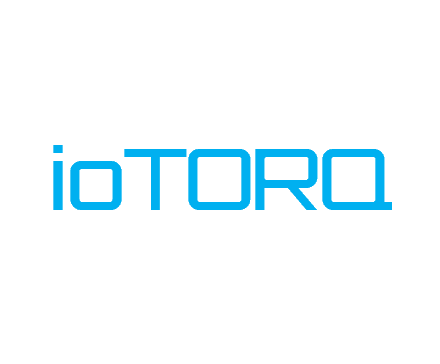What Is OEE Software?
OEE (Overall Equipment Effectiveness) software is a strong tool that helps manufacturers increase production efficiency and discover areas for improvement. It determines the proportion of time a machine or piece of equipment is operating at peak efficiency, taking into account three critical factors: availability, performance, and quality. Availability is the amount of time a machine is available for production.
Performance measures how efficiently the machine operates, taking into account variables like as speed and cycle duration. Quality is defined as the number of items that meet the specified requirements. By recording and analyzing these parameters, OEE software provides businesses with vital insights into their manufacturing processes, allowing them to identify bottlenecks, minimize downtime, and boost overall efficiency.
This data-driven strategy enables firms to make data-driven decisions that improve operations, decrease waste, and boost profitability. OEE software also provides real-time monitoring, allowing producers to track production performance and make adjustments to increase output. It integrates effortlessly with current equipment and processes, making it an ideal addition to any manufacturing facility.
In addition to performance monitoring, OEE software provides reporting and visualization capabilities. This allows producers to monitor their progress over time, discover trends, and make smart decisions about future developments. With the manufacturing industry's growing desire for efficiency and productivity, investing in OEE software is a prudent move for any company trying to remain competitive in the market. It not only helps to streamline processes and decrease costs, but it also improves customer and stakeholder satisfaction in the long run.
What Are The Recent Trends In OEE Software?
OEE software, or overall equipment effectiveness software, has grown in popularity in recent years due to its capacity to improve production processes and efficiency. As technology advances, so do the trends in OEE software.
Here are some of the most recent trends in the OEE software market that purchasers should keep in mind while selecting the best solution.
1. Cloud-Based Solutions: One of the most significant trends in OEE software is the transition to cloud-based solutions. This enables for more convenient and secure access to the program from anywhere, as well as lower IT maintenance expenses for the buyer.
2. Real-Time Data Monitoring: With the advent of Industry 4.0 and the Internet of Things (IoT), OEE software solutions now support real-time data monitoring. This provides immediate visibility into manufacturing processes and the opportunity to make quick changes for maximum efficiency.
3. Predictive Maintenance: OEE software now includes predictive maintenance solutions that use data analytics and machine learning to forecast when repair is required. This helps to save downtime and increase equipment life.
4. Integration With Other Production Systems: OEE software is currently being designed to work smoothly with other production management systems, including enterprise resource planning (ERP) and manufacturing execution systems (MES). This provides a more comprehensive perspective of production processes and facilitates data interchange between systems.
5. Mobile Applications: Many OEE software systems now include mobile applications, which provide on-the-go access to data and alarms. This is especially important for managers and supervisors who have to supervise manufacturing operations from multiple locations.
6. User-Friendly Interfaces: OEE software is becoming more user-friendly and intuitive, with customized dashboards and data visualizations. This allows users to examine data and make more educated judgments.
7. Emphasize Continuous Improvement: OEE software is no longer simply about measuring efficiency, but also about constantly improving it. Many solutions now include capabilities like root cause analysis and data-driven enhancement suggestions. These are just a few of the most recent trends in OEE software that customers should keep in mind as they evaluate their alternatives.
It is critical to carefully examine your production processes' requirements and select a solution that includes features and integrations that correspond with your objectives. With the correct OEE software, you can drive continuous improvement and optimize your manufacturing processes to achieve optimum efficiency.
Benefits Of Using OEE Software
Improving production efficiency is critical for any manufacturing or production organization to remain competitive and profitable in today's fast-paced marketplace. However, without the necessary tools and software, tracking and improving manufacturing efficiency can be difficult. This is where OEE (Overall Equipment Effectiveness) software comes in handy. OEE software is a complete performance tracking and analysis tool that helps firms monitor and enhance the efficiency of their production processes. It leverages real-time data from machines and manufacturing equipment to deliver important insights and analytics, enabling businesses to detect and remove operational inefficiencies. But what are the advantages of adopting OEE software?
Let's have a closer look.
1. Comprehensive Performance Tracking: OEE software tracks and monitors the performance of each machine as well as the entire manufacturing process, offering a detailed study of efficiency. It evaluates critical indicators such as availability, performance, and quality to provide an accurate view of total equipment efficacy.
2. Real-Time Data And Reporting: OEE software collects and analyzes data in real time, delivering up-to-date information about production efficiency. This enables firms to make educated decisions quickly and effectively, as opposed to traditional manual data collection methods, which can be time-consuming and error-prone.
3. Identifies Inefficiencies: OEE software helps firms detect performance bottlenecks, downtime causes, and reoccurring difficulties, allowing them to increase production efficiency. This saves time and money by reducing inefficiencies and streamlining the manufacturing process.
4. Increased Overall Equipment Effectiveness: As the name implies, OEE software aims to improve overall equipment efficiency. By measuring and evaluating metrics, businesses can boost production efficiency, reduce downtime, and improve product quality, resulting in increased profitability.
5. Configurable And User-Friendly: OEE software is highly configurable, allowing it to be adjusted to a business's exact needs. It also has a simple interface that staff can easily learn and utilize, saving time and resources on training.
6. Scalable Solution: OEE software is scalable, which means that it can expand to meet the needs of the organization. As the company's production processes grow, the software can easily handle the growing data and analytical requirements.
7. Integration With Other Systems: OEE software works with other business systems like ERP, CMMS, and MES to provide a comprehensive view of production efficiency and its impact on overall business operations. This connectivity enables firms to streamline their procedures, resulting in enhanced production and profitability.
Important Factors To Consider While Purchasing OEE Software?
When contemplating acquiring OEE (Overall Equipment Effectiveness) software, there are several key variables to consider. These variables will not only assist you in selecting the best OEE software for your business requirements, but will also ensure that it is used effectively in optimizing your production processes.
Here are the essential aspects to consider while making your decision:
1. System Compatibility: Before purchasing any OEE software, make sure it is compatible with your current systems, which may include ERP, CMMS, and MES. This will provide seamless integration and data sharing, allowing for precise tracking and analysis of production data.
2. User-Friendly Interface: A user-friendly interface is essential for the successful adoption and use of any product. Look for OEE software with a user-friendly design, easy navigation, and customizable dashboards. This will allow your team to swiftly adjust to and efficiently use the software's features.
3. Real-Time Data Monitoring: The capacity to monitor production data in real time is an essential feature of OEE software. This function provides for immediate diagnosis of production issues and timely decision-making, resulting in increased overall equipment effectiveness.
4. Customizable Reporting: The program should have customizable reporting, allowing you to track and analyze data depending on your individual KPIs and production objectives. This will provide useful insights into your processes and help you find areas for improvement.
5. Mobile Compatibility: As remote work becomes more common, having mobile-compatible OEE software is vital. This allows supervisors and managers to monitor production data and make data-driven choices from anywhere and at any time.
6. Training And Assistance: A competent OEE software vendor should give comprehensive training as well as continuing assistance to guarantee that the product is implemented and used successfully. This will help to maximize its benefits while also ensuring that any technical concerns are addressed swiftly.
What Are The Key Features To Look For In OEE Software?
When investing in OEE (Overall Equipment Effectiveness) software, buyers should look for three essential elements to ensure a high-quality and efficient solution.
These features will not only help to boost productivity and efficiency, but will also provide vital insights for making better decisions and optimizing return on investment.
1. Real-Time Monitoring: One of the most significant aspects of OEE software is the ability to track equipment performance in real time. This enables early detection of faults or downtime, as well as prompt resolution.
2. Data Visualization And Reporting: Good OEE software should include powerful data visualization features that provide data in an understandable fashion. This aids in the identification of patterns and trends and enables for extensive examination of manufacturing processes. It should also include reporting capabilities to generate configurable reports for better decision-making.
3. Integration With Other Systems: OEE software should be able to work with existing systems like ERP and CMMS to collect all necessary data and provide a complete picture of the manufacturing process.
4. Overall Equipment Effectiveness Calculations: As the name implies, OEE software should be able to determine overall equipment effectiveness using the standard OEE formula (Availability x Performance x Quality). This gives a single metric for measuring equipment efficiency and performance.
5. Automated Alerts And Notifications: An ideal OEE software should include the ability to set up automated alerts and notifications for a variety of circumstances, such as equipment failures, maintenance schedules, or low inventories. This helps to improve reaction time and reduce downtime.
6. User-Friendly Interface: The software's user interface should be simple and intuitive, allowing operators and managers to explore and use it without substantial training.
7. Customization Options: Because each production process and facility is unique, the software should be customizable to meet the organization's individual demands and specifications.
8. Mobile Accessibility: With the growing trend of remote work and on-the-go operations, a strong OEE software should be mobile-friendly, delivering real-time production data and notifications to users.
9. Technical Support And Training: Look for a software vendor who provides technical assistance and training to ensure that the program is properly implemented and used. This is also useful for troubleshooting any problems that may emerge.
10. Scalability: As the company grows and production processes change, the OEE software should be able to scale without causing major interruptions or incurring additional expenditures.
Why Do Businesses Need OEE Software?
Businesses require OEE (Overall Equipment Effectiveness) software to boost production, increase industrial efficiency, and save operational costs. OEE software is a powerful tool that enables businesses to track, monitor, and analyze their equipment's performance in real time, allowing them to make data-driven decisions that improve overall equipment effectiveness.
One of the primary reasons why firms want OEE software is to discover and measure inefficiencies in their production processes. Businesses using OEE software may track and record critical data such as availability, performance, and quality, making it easier to identify the main cause of downtime, failures, and other bottlenecks. By identifying and addressing these issues, firms can enhance overall equipment performance and increase production productivity.
Furthermore, OEE software gives organizations a comprehensive picture of their whole manufacturing process, from raw materials to finished product. This visibility enables organizations to discover areas for improvement and optimize their production flow to achieve optimal efficiency. Businesses, for example, can utilize OEE software to detect which machines or processes are causing delays or limiting production speed, and then make necessary improvements.
In addition to streamlining manufacturing processes, OEE software can assist firms uncover cost-cutting options. Businesses can discover wasteful equipment downtime, unused machinery, and waste by monitoring performance, availability, and quality measurements. This information is critical for lowering operating expenses and increasing earnings. Furthermore, OEE software allows firms to track and manage regular maintenance for their equipment, ensuring that machines work efficiently and reducing unexpected breakdowns.
This proactive maintenance method leads to higher production uptime, lower maintenance costs, and longer equipment life. Finally, OEE software provides firms with actionable insights and real-time data to help them make smart production decisions. Monitoring and analyzing production data allows organizations to discover patterns, estimate demand, and alter production plans accordingly. This enables organizations to meet customer demand, cut lead times, and increase customer satisfaction.
How Much Time Is Required To Implement OEE Software?
The time required to implement OEE (Overall Equipment Effectiveness) software varies depending on several factors, including the complexity of the industrial processes, the size of the organization, and the level of customization necessary. However, it might take anywhere from 2 weeks to 6 months to successfully integrate OEE software. The first step in implementing OEE software is to evaluate the present condition of production processes.
This includes finding areas for improvement, collecting data on equipment downtime, and analyzing production indicators. This process may take 2-4 weeks, depending on the availability of data and the participation of all players. Next, the chosen OEE software must be installed and customized to meet the organization's specific requirements. This can take 4-6 weeks because it include installing the software, integrating it with existing systems, and training personnel on its use.
After configuring the software, the company will need to conduct a trial period to check that it is running properly. This trial period can last anywhere from two to four weeks, during which time the program can be fine-tuned and any faults fixed. The final phase in installing OEE software is to roll it out throughout the organization and teach all workers on how to utilize it efficiently.
This may require an additional 2-4 weeks for a good transition. Overall, installing OEE software necessitates a large time investment from the company, but the benefits of greater productivity and efficiency far surpass the initial cost. Investing time in the right implementation of OEE software can result in long-term success in streamlining manufacturing processes and increasing overall equipment efficacy.
What Is The Level Of Customization Available In OEE Software?
When shopping for OEE software, you must examine the level of customisation offered. This factor can have a significant impact on how successful and efficient the program is for your specific requirements. Most OEE software allows for some level of modification to accommodate diverse sectors and production settings. However, the extent of customization differs amongst software.
Some OEE software enables comprehensive customization, allowing customers to modify every aspect of the product to their own needs. This includes creating personalized dashboards, reports, and data tracking choices. This level of customization is excellent for firms that use unique processes or specialist equipment. On the other side, some OEE software has limited customization capabilities, often giving preset templates and parameters.
This level of customization may be appropriate for organizations with simpler manufacturing processes, but it may not fulfill the requirements of more sophisticated operations. Before making a purchase, thoroughly consider the customization possibilities provided by OEE software. Consider your company's specific requirements and determine which level of customisation is ideal for you. Consider whether the program can be easily scaled as your company grows, or whether it provides further customisation features for an additional fee.
Which Industries Can Benefit The Most From OEE Software?
OEE software, also known as Overall Equipment Effectiveness software, is a sophisticated tool that allows firms to enhance their manufacturing processes by monitoring and analyzing equipment performance in real time.
While OEE software can assist a wide range of industries, some sectors will profit the most from its deployment.
1. Manufacturing Industry: The industrial industry is the primary benefactor of OEE software. This industry is strongly reliant on the efficiency and productivity of its equipment to ensure smooth operations and timely delivery of products. OEE software delivers essential insights into machinery performance, identifying bottlenecks and decreasing downtime, ultimately optimizing the entire production process.
2. Automotive Industry: The automotive industry stands to benefit considerably from using OEE software. With its complicated production processes and high-value equipment, any downtime or inefficiency can result in significant losses. OEE software delivers complete data on the operation of all equipment, allowing for early diagnosis of problems and timely corrective steps to reduce production losses.
3. Food & Beverage Industry: Quality control and waste reduction are critical in the food and beverage business. OEE software checks both equipment efficiency and output quality. It helps businesses maintain product uniformity and reduce waste, resulting in greater earnings and customer happiness.
4. Pharmaceutical Industry: The pharmaceutical sector requires high accuracy and rigorous adherence to regulatory norms. OEE software can offer real-time data on the performance of pharmaceutical manufacturing equipment, ensuring quality criteria are met. It also aids in identifying areas for improvement, hence increasing production and minimizing waste.
5. Healthcare Industry: The healthcare business is continually changing and requires precise and efficient equipment. OEE software can help in this industry by monitoring the functioning of critical medical equipment, ensuring timely repair, and minimizing downtime. Overall, this technology has the potential to improve patient care and outcomes.
Conclusion
To summarize, OEE software is an invaluable tool for manufacturers seeking to improve overall equipment efficacy and efficiency. By correctly collecting and analyzing production data, this software enables firms to detect inefficiencies and make data-driven optimization decisions. When deciding which OEE software to purchase, it is critical to compare the features, functionality, and user-friendliness of each alternative.
Furthermore, the software's adaptability and integration capabilities with current systems are critical for a smooth implementation and long-term success. Furthermore, it is critical to select a renowned and trustworthy software vendor with a proven track record of providing successful solutions to their clientele. Reading reviews and getting recommendations from other industry specialists can also provide useful information about the effectiveness and usability of various OEE software alternatives.
Manufacturers who use the correct OEE software can expect considerable improvements in equipment performance, reduced downtime, and enhanced efficiency. It is a sensible investment for any organization that wants to improve its manufacturing processes and remain competitive in the market.















